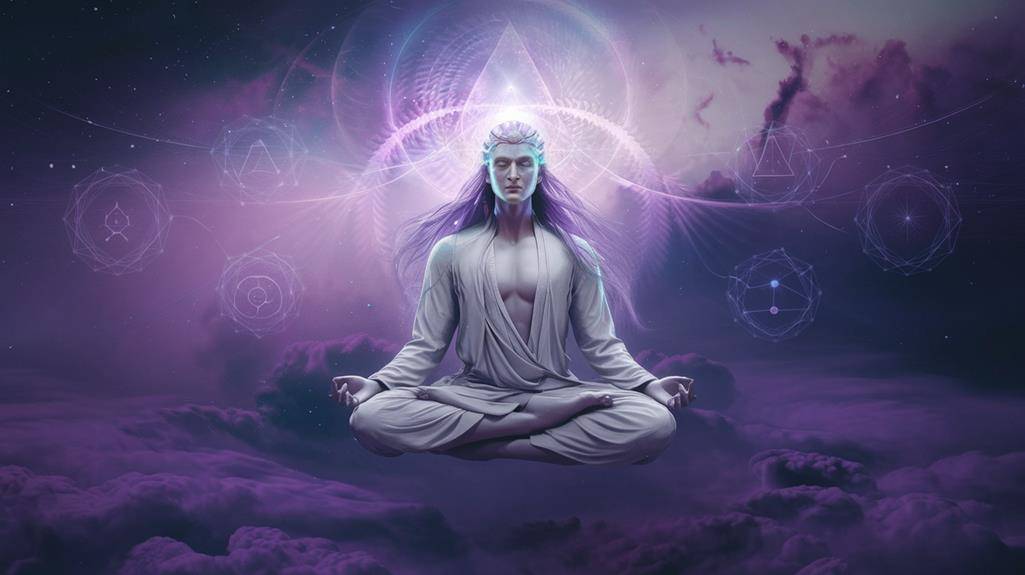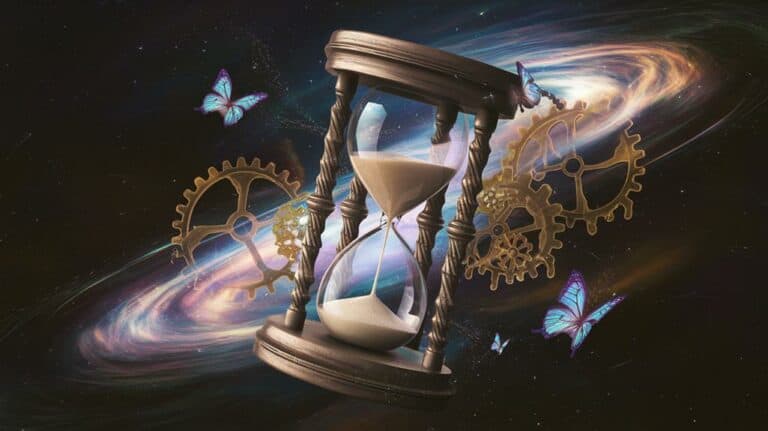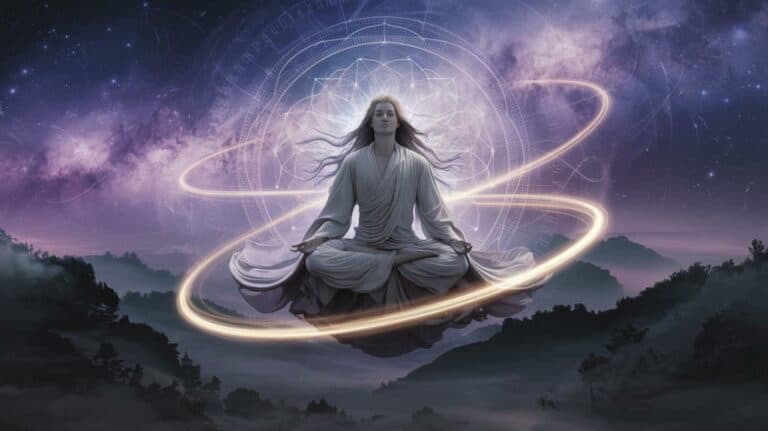Mystical Experiences and Altered States of Consciousness
You’ve likely wondered about those moments when reality seems to shift—when your ordinary consciousness gives way to something profound and inexplicable. Whether through meditation, psychedelics, or spontaneous awakening, these mystical states have intrigued humanity for millennia. Today, neuroscience offers unprecedented insights into how your brain creates and processes these extraordinary experiences, while ancient wisdom traditions provide context for their meaning. As modern research reveals measurable changes in neural activity during altered states, you’ll discover how these experiences can transform your understanding of consciousness and potentially reshape your relationship with reality.
The Science Behind Mystical States
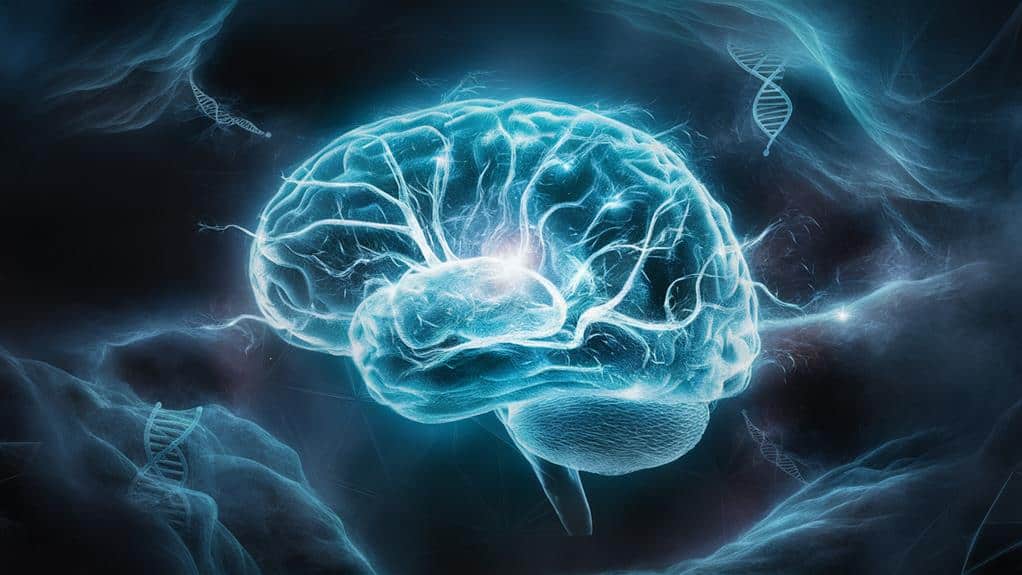
Throughout human history, scientists have worked to understand the neurological basis of mystical experiences. You’ll find that research has revealed fascinating patterns in brain activity during transcendent states, with distinct changes occurring in regions like the parietal lobe and temporal cortex.
These neural signatures hint at why you might feel a dissolution of ego boundaries or sense of oneness with the universe during profound moments. When you enter mystical states, your brain’s default mode network – responsible for your everyday sense of self – becomes less active, while other networks light up in novel configurations.
You’re experiencing measurable shifts in neurotransmitter levels, particularly serotonin and DMT, that can trigger vivid visions and feelings of cosmic significance. Modern imaging techniques have shown that your brain during mystical experiences resembles patterns seen in deep meditation and certain psychedelic states.
You’ll discover that these states aren’t just subjective experiences – they’re accompanied by observable changes in your brain’s electrical activity, blood flow, and chemical composition. This scientific lens doesn’t diminish the profound meaning of mystical experiences; rather, it helps you understand how your consciousness can expand beyond ordinary awareness.
Types of Altered Consciousness
Building on our understanding of the brain’s role in mystical experiences, altered states of consciousness take many distinct forms. You’ll encounter these states through various pathways, from deep meditation and lucid dreaming to profound religious revelations and transformative peak experiences. Each type offers a unique window into dimensions of consciousness beyond ordinary waking awareness.
When you enter contemplative states through meditation, you’ll notice how your perception shifts, allowing you to witness your thoughts without attachment while accessing deeper layers of being.
During lucid dreams, you’ll find yourself conscious within the dreamscape, able to explore the vast territories of your unconscious mind with unprecedented clarity.
Vision quests and ceremonial rituals can transport you into numinous domains where everyday boundaries dissolve, revealing interconnections usually hidden from view.
You might also experience spontaneous mystical states triggered by intense beauty, love, or even crisis – moments when your ordinary sense of self expands into something vast and boundless.
These aren’t mere alterations of consciousness but gateways into profound dimensions of human experience where you’ll discover new ways of knowing and being.
Historical Cultural Perspectives

From ancient shamanic rituals to modern spiritual practices, mystical experiences have shaped human culture and consciousness across millennia. You’ll find that throughout history, civilizations have developed sophisticated methods to access altered states – from the Oracle at Delphi’s prophetic vapors to Buddhist meditation techniques that have endured for centuries.
As you explore humanity’s relationship with transcendent experiences, you’ll discover how indigenous peoples worldwide have used sacred plants and ritualistic drumming to bridge the physical and spiritual domains. The ancient Egyptians constructed elaborate temples where initiates would undergo transformative mysteries, while Sufi mystics developed whirling ceremonies to achieve divine unity.
These practices weren’t mere superstition – they represented humanity’s enduring quest to understand consciousness itself.
You’re part of this unbroken lineage of seekers, inheriting wisdom that stretches from prehistoric cave paintings to medieval Christian mysticism to contemporary explorations of consciousness.
Today’s scientific understanding of these states doesn’t diminish their cultural significance; rather, it adds another layer to humanity’s ongoing dialogue with the mysterious and profound dimensions of existence that you’re still working to comprehend.
Meditation and Brain Activity
Scientific research has revealed remarkable changes in brain activity during meditation practices. When you enter deep meditative states, your brain waves shift distinctly – alpha and theta patterns emerge, indicating heightened awareness coupled with profound relaxation.
You’ll find your neural networks reorganizing themselves as you cultivate this focused attention, creating new pathways that enhance your cognitive flexibility and emotional regulation.
As you deepen your practice, you’re likely to experience measurable changes in brain regions associated with self-awareness and compassion. The prefrontal cortex, your center of executive function, shows increased activity while your amygdala, responsible for fear responses, becomes less reactive.
You’re fundamentally rewiring your brain’s default mode network, breaking free from habitual thought patterns that often trap you in cycles of anxiety and rumination.
Through consistent meditation, you’ll notice these neurological shifts manifesting as tangible experiences – moments of clarity where time seems to dissolve, instances of boundless awareness where you transcend your ordinary sense of self.
Your brain’s neuroplasticity allows for these transformative states, opening doorways to consciousness that extend beyond conventional awareness.
Psychedelics and Neural Pathways
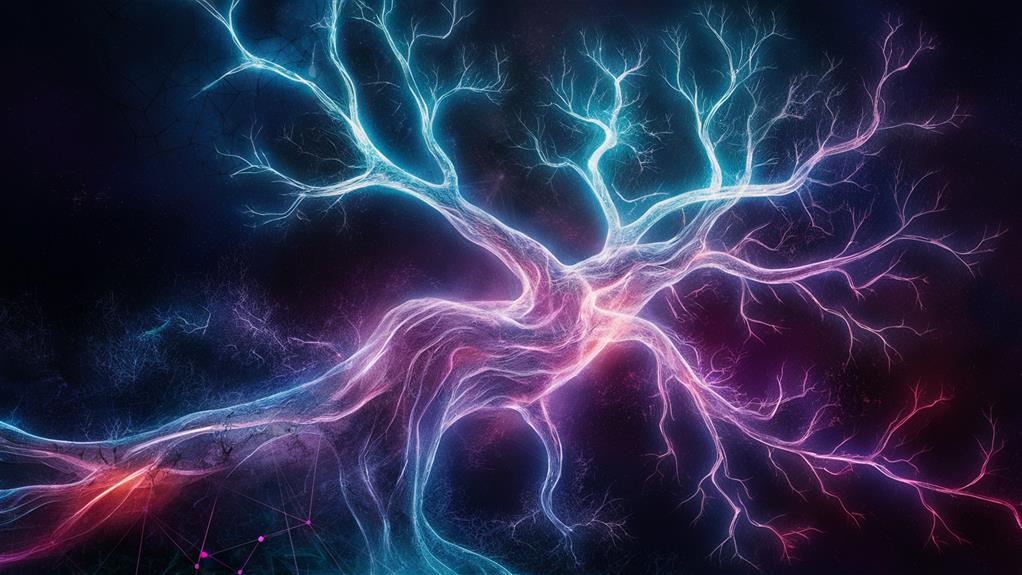
Research into psychedelics reveals three primary ways these substances alter neural communication patterns.
First, you’ll find that psychedelics enhance neural plasticity, allowing your brain to form new connections and break free from rigid thought patterns that may have held you back. When you’re under their influence, previously separate brain regions begin communicating in novel ways, creating bridges between neural networks that don’t typically interact.
Secondly, these compounds notably affect your default mode network (DMN), the brain system responsible for your sense of self and everyday consciousness. You’ll experience a temporary dissolution of ego boundaries as the DMN’s activity decreases, opening doorways to profound shifts in perspective and understanding.
The third mechanism involves the amplification of sensory processing, where you’ll notice enhanced cross-talk between different sensory regions of your brain.
As you navigate these altered neural pathways, you’re participating in what neuroscientists call “expanded consciousness” – a state where your brain’s usual hierarchical structure gives way to a more fluid, interconnected pattern of communication.
This restructuring can lead to lasting changes in how you process information and experience reality.
Sensory Deprivation Experiences
Through careful elimination of external stimuli, sensory deprivation tanks create profound alterations in consciousness that rival psychedelic experiences. As you float weightlessly in complete darkness and silence, your mind begins to untether from its usual sensory anchors, drifting into unexplored territories of awareness.
You’ll notice how your consciousness expands beyond its ordinary boundaries when deprived of external input, revealing hidden dimensions of your inner landscape. In this state of profound isolation, you’ll discover that your brain, seeking to fill the void, begins generating its own reality.
You might experience vivid hallucinations, time distortions, or deep meditative states that you’ve never accessed before. Your thoughts become crystal clear, yet paradoxically distant, as if you’re observing them from an entirely new vantage point.
The boundaries between self and space begin to dissolve, leading to experiences of ego dissolution similar to those reported in deep meditation or mystical states. You’re likely to emerge from the tank with a shifted perspective on consciousness itself, having experienced firsthand how your perception of reality depends on the delicate interplay between your senses and your mind.
Spontaneous Mystical States
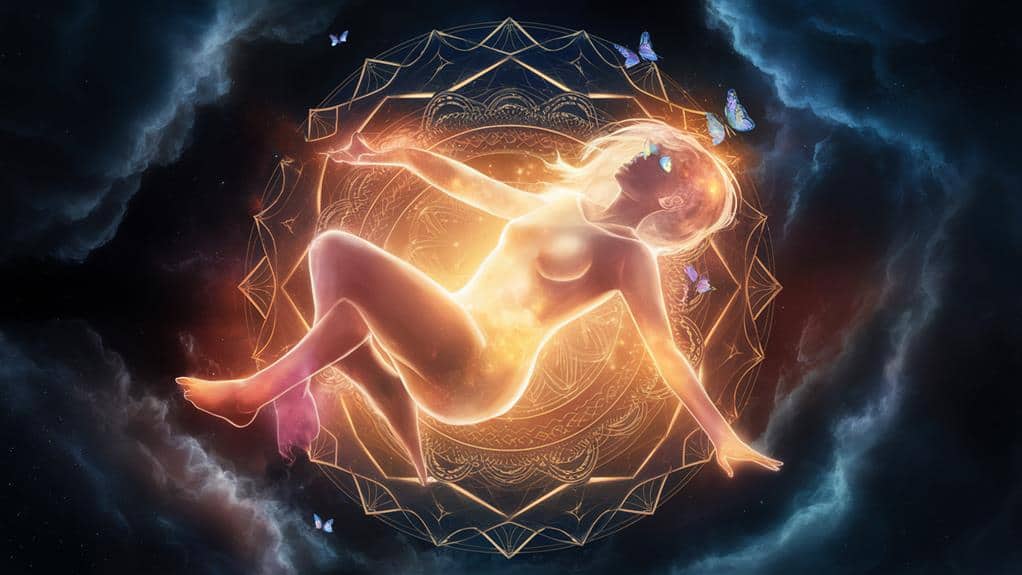
While mystics and spiritual seekers often spend years practicing meditation to achieve transcendent states, spontaneous mystical experiences can occur unexpectedly in everyday life, catching people completely off guard.
You might find yourself suddenly immersed in a profound sense of unity with all existence, or experience a dissolution of your ordinary sense of self while walking in nature or performing mundane tasks.
During these unexpected moments, you’ll often notice that time seems to slow down or stop entirely, and you’ll feel a deep connection to something vast and ineffable.
Your normal boundaries between self and world may temporarily dissolve, replaced by an overwhelming sense of oneness and profound understanding.
These experiences can leave you with lasting insights that transform your perspective on reality and your place within it.
You can’t force these spontaneous mystical states to occur, yet they often arise during periods of openness and receptivity.
Whether triggered by natural beauty, music, or even moments of crisis, these experiences can permanently alter your understanding of consciousness and what it means to be human, revealing dimensions of existence you’d never imagined possible.
Research Methods and Findings
Scientists have developed innovative methods to study mystical experiences in controlled laboratory settings, combining traditional survey instruments with modern brain imaging technology. You’ll find that researchers now employ sophisticated EEG and fMRI scans to map neural activity during transcendent states, while participants report their inner experiences using validated questionnaires and real-time descriptions.
When you explore the findings, you’ll discover striking patterns emerging from this research. Studies have shown that mystical experiences often correlate with decreased activity in the brain’s parietal lobe, which processes your sense of space and time.
You’re likely to be intrigued by evidence suggesting that certain meditation practices and psychedelic substances can reliably induce states remarkably similar to spontaneous mystical experiences. The research has revealed that during these states, you’ll typically experience a dissolution of ego boundaries and a profound sense of unity with something greater than yourself.
These findings don’t just validate subjective reports – they’re offering unprecedented insights into how your brain functions during transformative spiritual experiences, bridging the gap between ancient wisdom traditions and contemporary neuroscience.
Therapeutic Applications
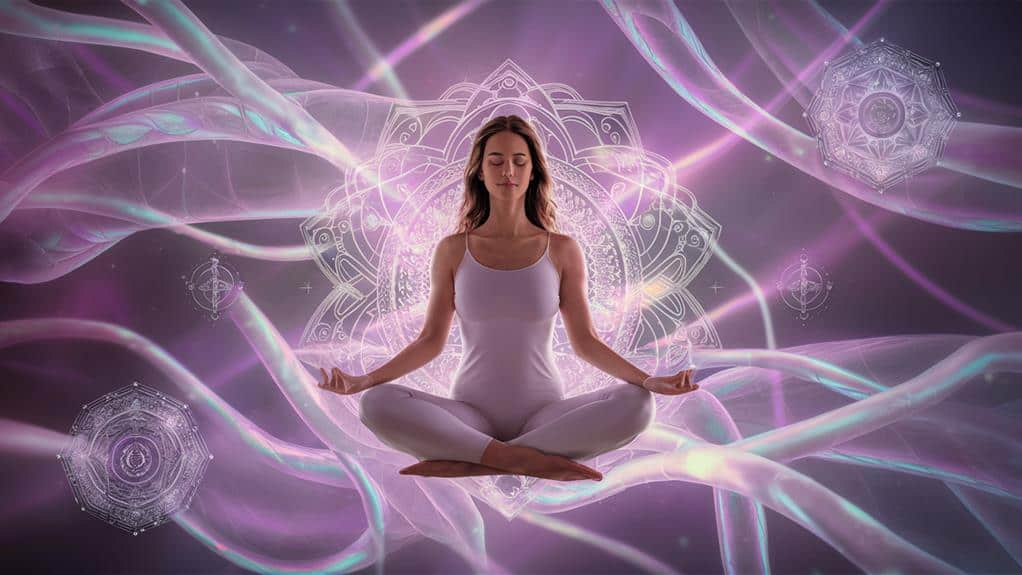
Recent clinical trials have demonstrated powerful therapeutic benefits of mystical experiences in treating various mental health conditions.
You’ll find that carefully guided sessions using psychedelics or holotropic breathwork can help you process trauma, anxiety, and depression in ways traditional therapy often can’t reach. When you enter these profound states of consciousness, you’re able to access deeper layers of your psyche, confronting and integrating shadow aspects of yourself that may have remained hidden for years.
In therapeutic settings, you’ll discover that mystical experiences can dissolve the barriers between your conscious and unconscious mind, allowing you to witness your life’s narrative from an expanded perspective.
These encounters often lead to lasting positive changes in your personality structure and belief systems. You’re likely to find that a single profound mystical experience can catalyze more therapeutic progress than years of conventional talk therapy.
The key lies in the experience’s ability to help you transcend your ordinary mental frameworks, offering direct insight into life’s fundamental interconnectedness.
Through these expanded states, you’ll often discover a natural healing intelligence within yourself that knows exactly what needs attention and integration.
Future Directions in Consciousness Studies
Emerging technologies are revolutionizing how we study mystical experiences and altered states of consciousness. You’ll witness unprecedented breakthroughs as neuroscience merges with virtual reality, allowing you to explore transcendent states while researchers map your neural pathways in real-time.
These tools won’t just measure your brain activity; they’ll help reveal the mysteries of consciousness itself. As you venture into this expanding frontier, you’ll encounter new paradigms that challenge traditional understandings of reality and consciousness.
Advanced brain-computer interfaces will let you share subjective experiences with unprecedented clarity, while artificial intelligence systems will help decode the patterns underlying mystical states. You’re living in an era where quantum computing might soon model consciousness itself, offering insights into the very nature of awareness and perception.
The future beckons you to participate in this unfolding revolution. Whether through meditation-enhancing wearables or consciousness-expanding technologies, you’ll have access to tools that previous generations could only dream about.
These developments aren’t just advancing science; they’re opening doorways to deeper understanding of your own consciousness and its vast potential.



